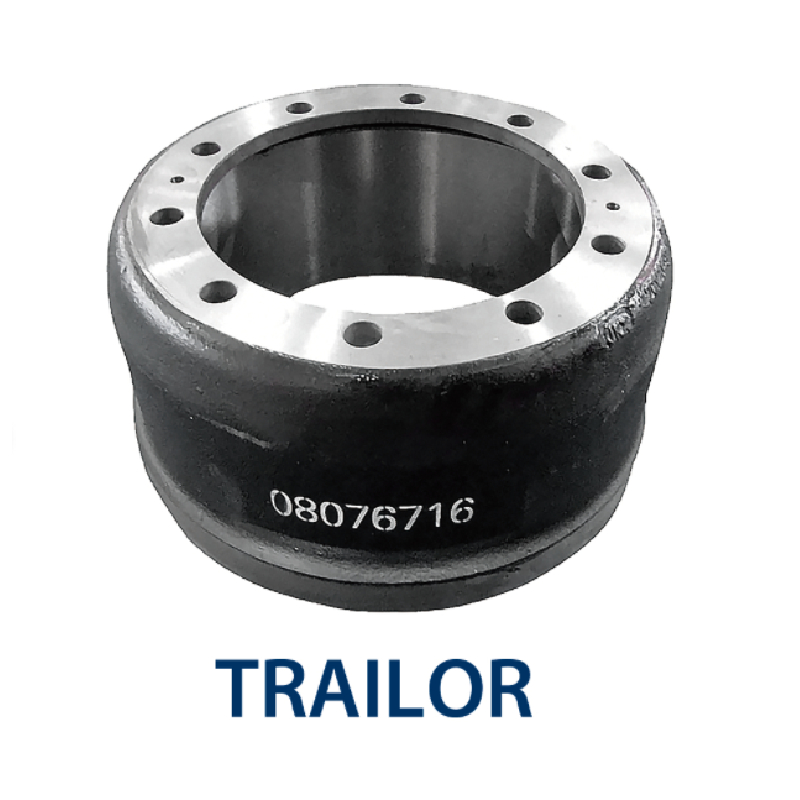Nën . 19, 2024 13:59 Back to list
brake drum casting process
The Brake Drum Casting Process An Overview
Brake drums are critical components in the braking systems of vehicles, particularly in older models and heavy-duty trucks. Their ability to withstand high temperatures, resist wear, and support high loads makes the casting process that creates these parts essential to automotive manufacturing. This article explores the various stages of the brake drum casting process, its materials, design considerations, and quality control measures, ultimately highlighting its importance in vehicle safety and performance.
Materials Used in Casting
Typically, brake drums are made from cast iron or aluminum alloys due to their excellent mechanical properties. Cast iron is preferred for its wear resistance, thermal conductivity, and ability to dissipate heat effectively. The choice of material significantly affects the performance characteristics of the brake drum, including its strength, durability, and ability to absorb and distribute thermal energy. Some advanced manufacturing techniques use high-performance composites to reduce weight without compromising strength. Selecting the appropriate material is the first critical step in the casting process that influences the final product's quality.
Design Considerations
The design of a brake drum must accommodate the stresses it will encounter during its lifecycle. Engineers utilize computer-aided design (CAD) software to create detailed specifications that account for factors such as thermal expansion, load distribution, and weight optimization. Attention is paid to features like the drum's profile, thickness, and ventilation patterns to enhance cooling during braking. Importantly, the design must also incorporate the necessary dimensions to ensure compatibility with the vehicle’s brake system.
The Casting Process
The brake drum casting process typically follows these key steps
1. Pattern Making A detailed pattern of the brake drum is created, usually from materials such as wood, metal, or plastics. This pattern is a replica of the final product and is used to create the mold.
brake drum casting process

2. Mold Creation The pattern is placed in a sand mixture that forms a mold. Once the sand sets, the pattern is removed, leaving a hollow cavity that matches the pattern's shape. The mold must be precise, as any imperfections can lead to defects in the final product.
3. Melting and Pouring Raw materials, typically cast iron or aluminum, are heated in a furnace until they reach a molten state. This molten metal is then poured into the mold, filling the cavity to create the brake drum shape. The pouring process must be controlled to minimize air entrapment and ensure uniform distribution of the metal.
4. Cooling and Solidification After pouring, the molten metal is allowed to cool and solidify, forming the brake drum. The cooling rate can affect the mechanical properties of the cast material, so it must be carefully managed.
5. Mold Removal and Finishing Once the metal has cooled sufficiently, the sand mold is broken away, revealing the rough cast of the brake drum. Subsequent finishing processes, such as grinding, machining, and polishing, are applied to achieve the desired surface finish and dimensional accuracy.
Quality Control Measures
Quality control is paramount in the brake drum casting process. Manufacturers employ various non-destructive testing methods, such as X-ray inspection and ultrasonic testing, to detect any internal flaws or defects in the castings. Additionally, dimensional inspections ensure that the drums meet the necessary specifications. Regular testing and adherence to industry standards, such as ISO and SAE, are crucial to ensuring the safety and reliability of the final products.
Conclusion
The casting process for brake drums is a complex and highly engineered operation that directly impacts vehicle performance and safety. Through careful selection of materials, precise design considerations, and rigorous quality control, manufacturers produce brake drums that not only meet regulatory requirements but also enhance the overall driving experience. As automotive technology continues to evolve, so will the methods and materials used in brake drum casting, fostering advancements that prioritize both innovation and safety.
-
Liza Brake Drum: Superior Quality & Performance for Safe Driving
NewsAug.24,2025
-
Iveco Brake Drum | Premium OE Quality for Daily & Eurocargo
NewsAug.22,2025
-
Your Brake Drum Man: Quality & Performance Parts
NewsAug.21,2025
-
Explore Japan: Ultimate Travel Guide & Authentic Experiences
NewsAug.19,2025
-
Your Brake Drum Man: Premium & Reliable Brake Drums for Sale
NewsAug.18,2025
-
ROR Web Development: Build Fast, Scalable, Secure Apps
NewsAug.17,2025
